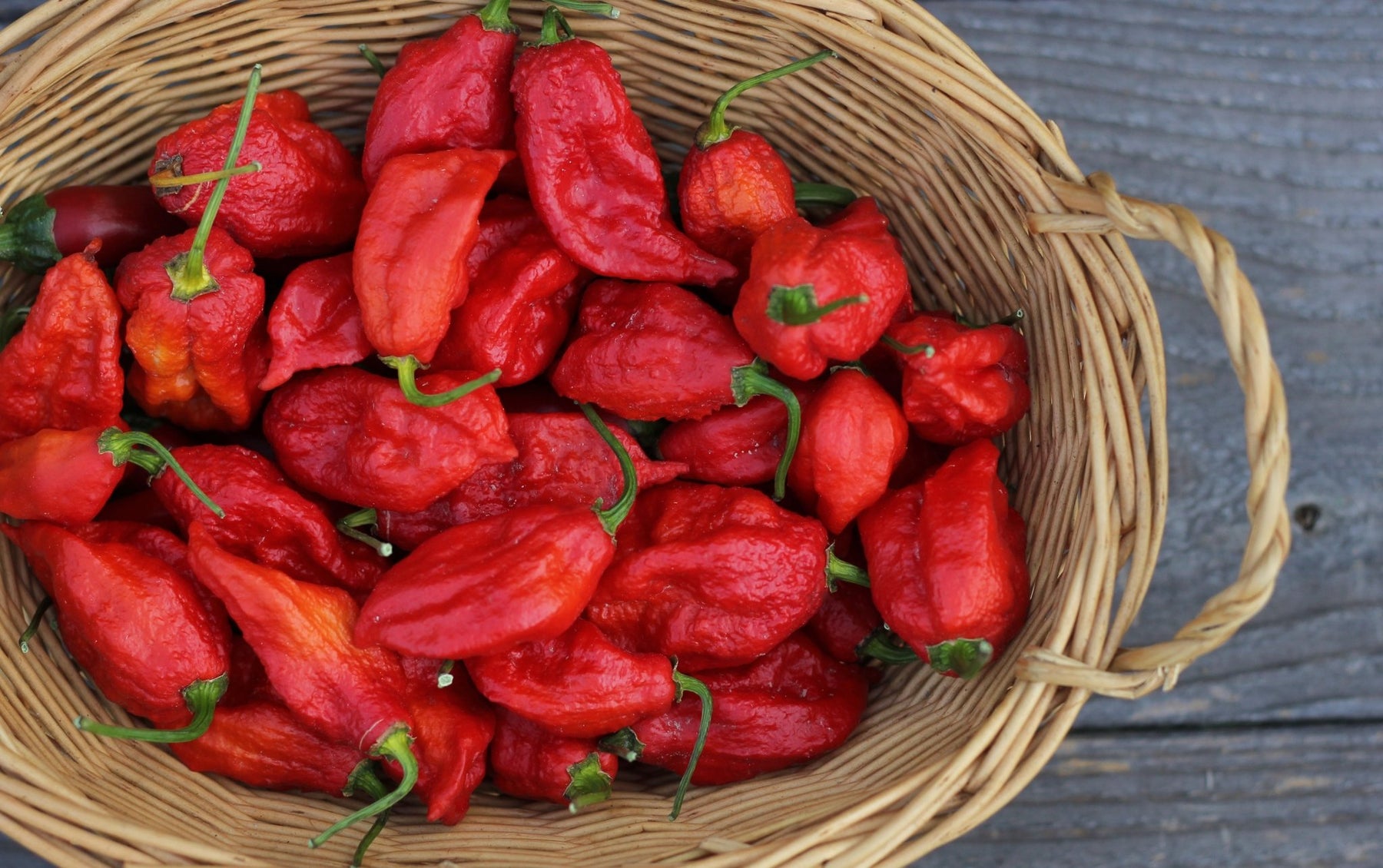
Why do humans like spicy food so much?
The heat of chile peppers evolved as a defense mechanism against being eaten by mammals like humans. So why do humans love eating spicy food? The short answer is we get a kick out of the endorphin rush and we enjoy the flavor/health benefits. But for a more in dephth look, paper in the International Journal of Gastronomy and Food Science lays out 4 primary theories. None of these theories are mutually exclusive, but they provide a useful jumping off point.
The masochistic/thrill-seeking hypothesis:
According to one popular suggestion, it is the endorphin hit, much like running a marathon, that people come to associate with the consumption of increasingly-spicy food, which they, in some sense, crave or even become ‘addicted’ to (Rozin & Schiller, 1980; see also Byrnes & Hayes, 2015, 2016). According to Paul Rozin (1987), the oral burn from peppers may well lead to the release of endogenous opioids. It has to be said, though, that this account perhaps does a better job of explaining chilli-liking in some countries, like North America, where an ability to handle the heat has, amongst a certain section of the society, become associated with outward signs of masculinity. This account does a less good job in other cultures, like Mexico, where the consumption of chilli in a meal is much more widespread part of the cuisine (and where chillies are added to many dishes more for their flavour than for their pungency/spicy character; see Miller & Harrison, 1991). [...]
The antimicrobial hypothesis:
According to another suggestion, spices (in general) may originally have been added to foods in order to help kill-off bacteria and to provide protection against a range of food-borne illnesses (Sherman & Billing, 1999; see also Liu, 1996). This suggestion certainly fits well with a number of the observations: First-off, a growing body of evidence demonstrates that various spices can kill the bacteria that spoil many meats, and which become more prevalent as the ambient temperature increases (Billing & Sherman, 1998). So, for example, it has been shown that the number of spices found in recipes for meat goes up with the average temperature. [...]
The assumption here is that the majority of these recipes became entrenched in the culture prior to the advent of widespread refrigeration. What is more, in those cultures that span different climatic zones, the same relationship between ambient temperature and the use of spices in meat-based recipes is observed.
The thermoregulation/induced salivation hypotheses:
A third suggestion that has been put forward to explain the widespread use of chilli in the foods eaten in warmer climates is that, by inducing gustatory facial sweating, the consumption of capsaicin might play some small role in thermoregulation (e.g., Abdel-Salam, 2016; Lara, 2015; Lee, 1954). Other commentators, including chefs, meanwhile, point to capsaicin’s role as an inducer of salivation (Abdel-Salam, 2016; Rozin, 1987; Tellez, 2011), thus making it easier to consumer dry foods. However, the latter two suggestions would seem to have fallen out of favour in recent years. This is perhaps because, as noted by Rozin and Schiller (1980; see also Sherman & Billing, 1999), many of the spices that are added to foods have no thermoregulatory (or, for that matter, salivation-inducing) function, thus, at least, arguing against this as a general account of why spices should have been added to foods.
Medicinal/health/dietary accounts:
The consumption of chillies has served a non-culinary medicinal role a various points in history too. At the same time, however, it has also been suggested that capsaicin, when consumed to excess, may exhibit carcinogenic properties (Surh & Lee, 1996), though such claims have certainly not convinced everyone (e.g., see McGee, 1984/2004, p. 419). Perhaps the closest to evidence in humans comes from an epidemiological study conducted in Mexico in which those who consumed chilli pepper in their cuisine were found to be at a higher risk for gastric cancer than non-consumers of chilli (López-Carillo, Hernández Avila, & Dubrow, 1994). Of course, being merely correlational in nature, this particular study falls short in terms of convincingly demonstrating a causal role for capsaicin in cancer. (though see also Lopez-Carrillo, Lopez-Cervantes, Robles-Diaz, Ramirez-Espitia, Mohar-Betancourt, Meneses-Garcia, et al., 2003; Nilius & Appendino, 2013). What is more, one has to presume that all of the drug companies out there who have incorporated capsaicin into their topical analgesics must have done the appropriate background toxicology research in order to reassure themselves that capsaicin is not, in fact, carcinogenic. In fact, contrary to the very suggestion that eating chile might be deleterious to one’s health, an intriguing recent study showed that of 16,000 North Americans who had completed food questionnaires over an average of nearly 20 years. During that time nearly 5,000 of them had died. What they found was that those who ate a lot of red hot chillies were 13% less likely to die during that period than those who did not, or as the authors dryly put it: “Consumption of hot red chili peppers was associated with a 13% reduction in the instantaneous hazard of death.” (Chopan & Littenberg, 2017, p. 1; see also Lv, Qi, Yu, Yang, Guo, Chen, et al., 2015, for similar conclusions from an earlier Chinese study).
All in all, the answer is likely some combination of all of these theories. The antimicrobial hypothesis potentially played a large role in early adoption, but essentially no role in the modern world. And we think the incredible flavor of chiles is underrated in their popularity as well.
In conclusion, we'll leave you with a meme:

